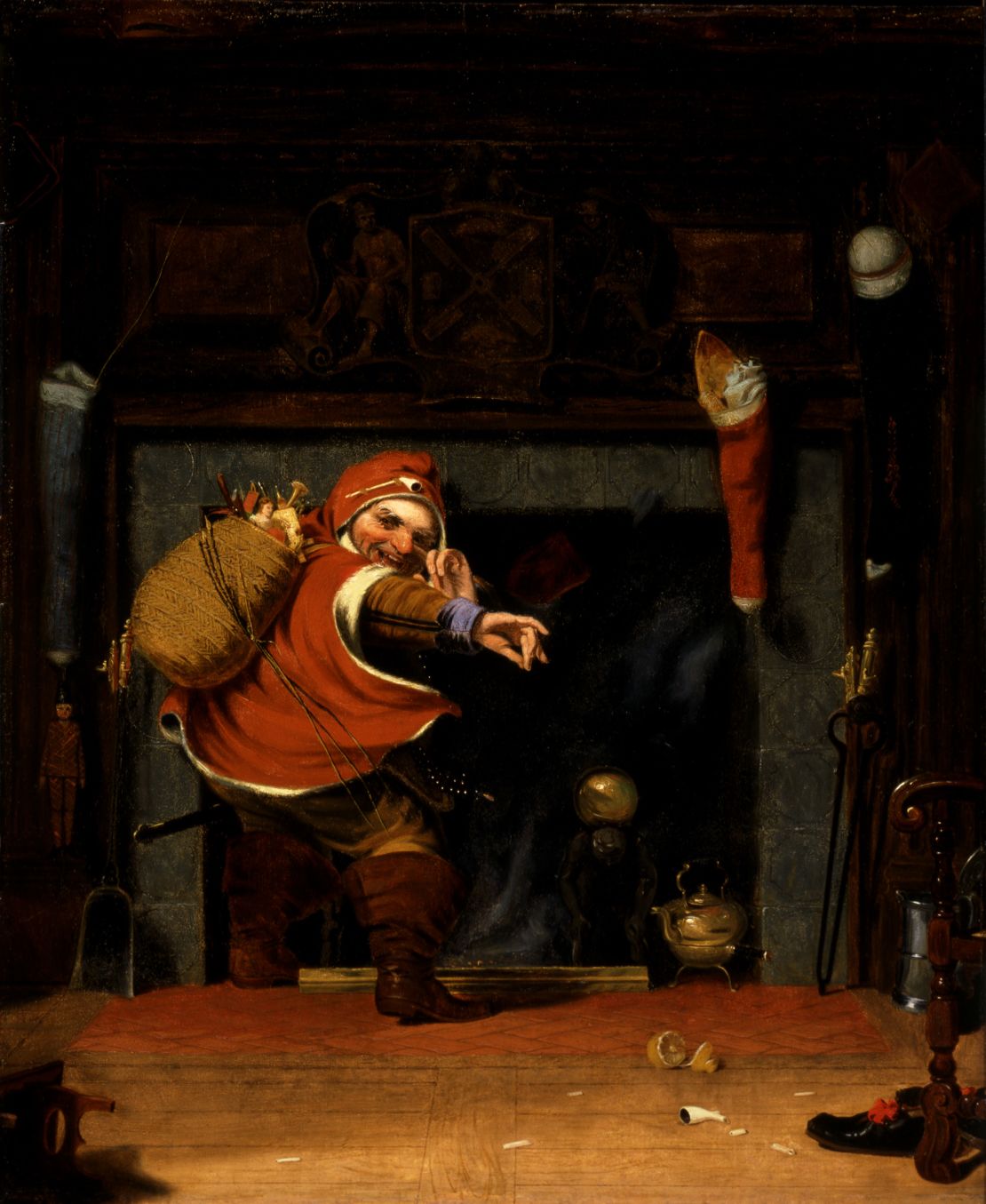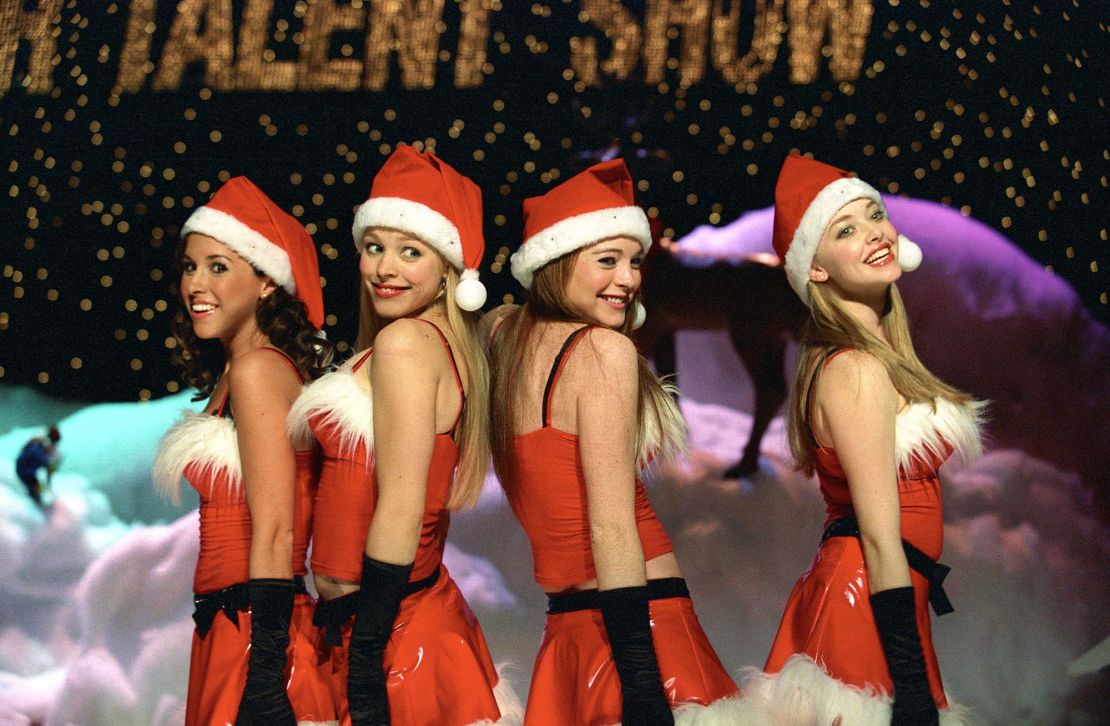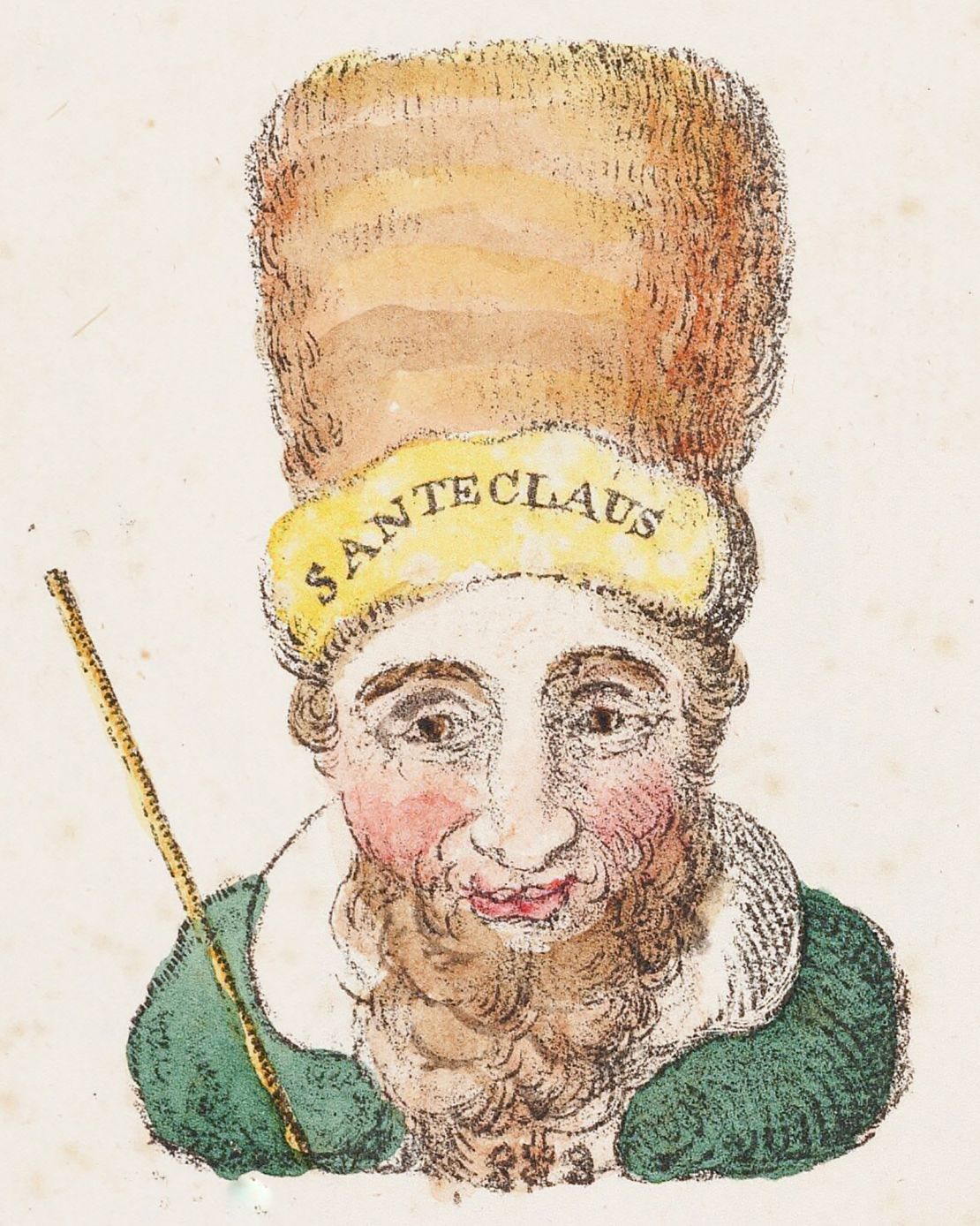From “chameleon” to today’s familiar form in the West – His dress codes over time – He is not a “creation” of Coca Cola
Red velvet suit, white fur, tall black boots, warm beanie hat with pom-pom. Santa’s outfit may have some variations from Tim Allen’s… outfits in ‘The Santa Clause’ as he slowly transforms into the legendary bearded man, to the Plastics girl group versions in ‘Mean Girls’, but, as CNN points out, his signature look is deeply ingrained in pop culture and the popular imagination.
His dress codes ensure uniformity among all Santas, at least in the United States, with elements that are seemingly non-negotiable. A Santa wearing a dark green suit at Bloomingdale’s for the department store’s collaboration with the movie “Wicked” has made tabloid headlines as the latest attempt to stoke fury over the Christmas holiday. One mom told the New York Post about the ad: “Not everything needs to be changed or challenged… The Green Santa Claus is an idiot.”
But Santa didn’t always wear red, and in fact his clothes, appearance, and even height took nearly a century to evolve into the iconic character we (re)know today. His predecessors include the early Christian bishop Saint Nicholas and the Dutch equivalent of Sinterklaas. The French Père Noël• and the gift-giving baby Jesus from Germany, Christkindl, among many others. But the Americanized Santa Claus first began to take shape in the 1820s and continued to evolve through poetry, popular illustration, and advertising.
The basic features of Santa Claus – a bearded man wearing fur and being pulled by reindeer in a sleigh – became canon thanks to Clement Clarke Moore’s poem “A Visit from St. Nicholas’ (also known as ‘Twas the Night Before Christmas’) of 1823, as well as a lesser-known anonymous poem that preceded it in 1821 called ‘Santeclaus’. But everything else she wore was up for interpretation.
“It took about 80 years for the American artists to come up with Santa’s outfit. Until then, you could dress him in any color, in all kinds of robes and variations of them,” historian Gerry Bowler, author of “Santa Claus: A Biography,” explained to CNN.
“Different Santas”
Some early interpretations of Moore’s vision show the jovial holiday “invader” as a mischievous little elf, a peddler of goods who could fit—and more believably because of his size—up a chimney: An illustrated version of the 1864 poem dresses St. Nicholas, who traditionally wears the vestments of a Bishop, with yellow clothing and fur hat, while an 1837 oil painting shows him in a red fur cape. But others took “more liberties” with his image: PT Barnum’s 1850 ad promoting the singer Jenny Lind shows him as a beardless American Revolutionary-era figure, while a 1902 cover for “The Life and Adventures of Santa Claus” (The Life and Adventures of Santa Claus) by L. Frank Baum “wears” a dark coat with animal print fur trims and fancy red boots.
Thomas Nast, the Harper’s Weekly cartoonist who branded American culture the donkey for Democrats and the elephant for Republicans, played a key role in how Santa Claus is envisioned in the West. He first painted him in 1863, during the Civil War, wearing the Stars and Stripes as he distributed gifts to Union Army soldiers. But the most timeless image of Nest comes from 1881, and it’s a version in a buttoned-up red suit, much like today’s. He was followed by artists Norman Rockwell and JC Leyendecker, who drew a Santa in his now-iconic suit for The Saturday Evening Post in the early 20th century.
These artists’ designs are often overshadowed by Coca-Cola’s long-running Christmas holiday advertising campaigns, illustrated by Haddon Sundblom, which began in 1931 and have become synonymous with the appearance of Santa Claus. With red cheeks and a style reminiscent of Rubens, Sundblom’s version of Santa Claus, originally based on a retired salesman who happened to be a friend of the illustrator, became wildly popular and remains folklore-endurable to this day.
“I think most people (believe) that Coca Cola had something to do with the establishment of the red and white Santa suit … you definitely see that all over the internet,” Bowler said. “But it’s not true. Santa’s iconic outfit was (determined) decades ago.”
Coca-Cola wasn’t even the first soft drink to promote Santa in his suit, he added, with White Rock Beverages doing so during World War I, a few years before his first appearance (before Sundblom) for Coke.
“Certainly (Coca-Cola’s) ads have been ubiquitous – they’ve been a huge issue for years, so any variation really bothers people,” he said.
Nostalgia
The early visionaries of the Santa Claus image may not have chosen his red suit, but they certainly intended him to be a nostalgic character, according to historian and author Stephen Nissenbaum. In his 1988 book The Battle for Christmas, Nissenbaum outlines the history of his character and disputes the oft-repeated references to his origins as an “import” of St. Nicholas, Sinterklaas of the Netherlands.
Instead, Nissenbaum points to a group of “antiquity-minded New York gentlemen”—which included Moore, New York Historical Society founder John Pintard, and author Washington Irving—who deliberately reshaped the Dutch figure in the decade of 1820 as a symbol of the most family-friendly Christmas holidays amid rising poverty and crime.
In fact, according to Nissenbaum, the traditional harbinger of Christmas in New England was a raucous, boozy, lustful month-long celebration during the 17th and early 18th centuries that acted as a “safety valve” for the poor to to “discharge” in a more controlled manner from social unrest. A popular custom allowed people to enter the homes of the rich with the expectation that they would be given the best food and drink as a gesture of goodwill.
In Moore’s time, he explains, Christmas was not celebrated in any uniform way. The Puritans tried to suppress them, while the Evangelicals sought to turn them into a strictly pious occasion on December 25th. Others still enjoyed the long tradition of mischief, leading to rowdy, roving festive street gangs.
“None of these ways of celebrating of Christmas was not very similar to the holiday that most of us know today… In none of them would we find the familiar gathering between friends and relatives or the Christmas presents. Nowhere would we find Christmas trees, no reindeer, no Santa Claus,” Nissenbaum writes.
In this new version of Christmas, children—who, until that time, were treated more like needy little adults—became the objects of generosity, freeing the well-to-do from any expectation of serving the poor. And Moore’s vision of Saint Nicholas, whom Nissenbaum argues was given a secular, working-class “facelift,” transformed the home “invader” into a visitor who makes no demands but, instead, offers gifts.
As his attire evolved, Santa’s “elf visage” faded, also changing, into a much taller, jovial and purely benevolent visitor.
“It’s a non-threatening look, but it’s still foreign,” Bowler told CNN of his outfit. “He’s a creature of the imagination, and he wears what no one else wears. But over time, becomes familiar’.
Bowler believes that many of its features that captured the popular imagination were simply practical choices: Once it was decided that it was native to the Arctic, fur followed. The red color is vibrant and contrasts with both his white beard and the white snow.
But tracing the exact influences of Santa’s style can be lost in time, as he has many “analogues” in different parts of the world, some of which have simply been combined into this single Westernized image. His cap alone has been attributed to the ancient Phrygian hat, among many others, but it is now clearly “his” and an irreplaceable part of his identity.
With such a varied history in fashion, Santa’s… wardrobe used to be much larger. Perhaps there is room in the future for it to change once more, without backlash from the “traditionalists”.
Source :Skai
I am Frederick Tuttle, who works in 247 News Agency as an author and mostly cover entertainment news. I have worked in this industry for 10 years and have gained a lot of experience. I am a very hard worker and always strive to get the best out of my work. I am also very passionate about my work and always try to keep up with the latest news and trends.













